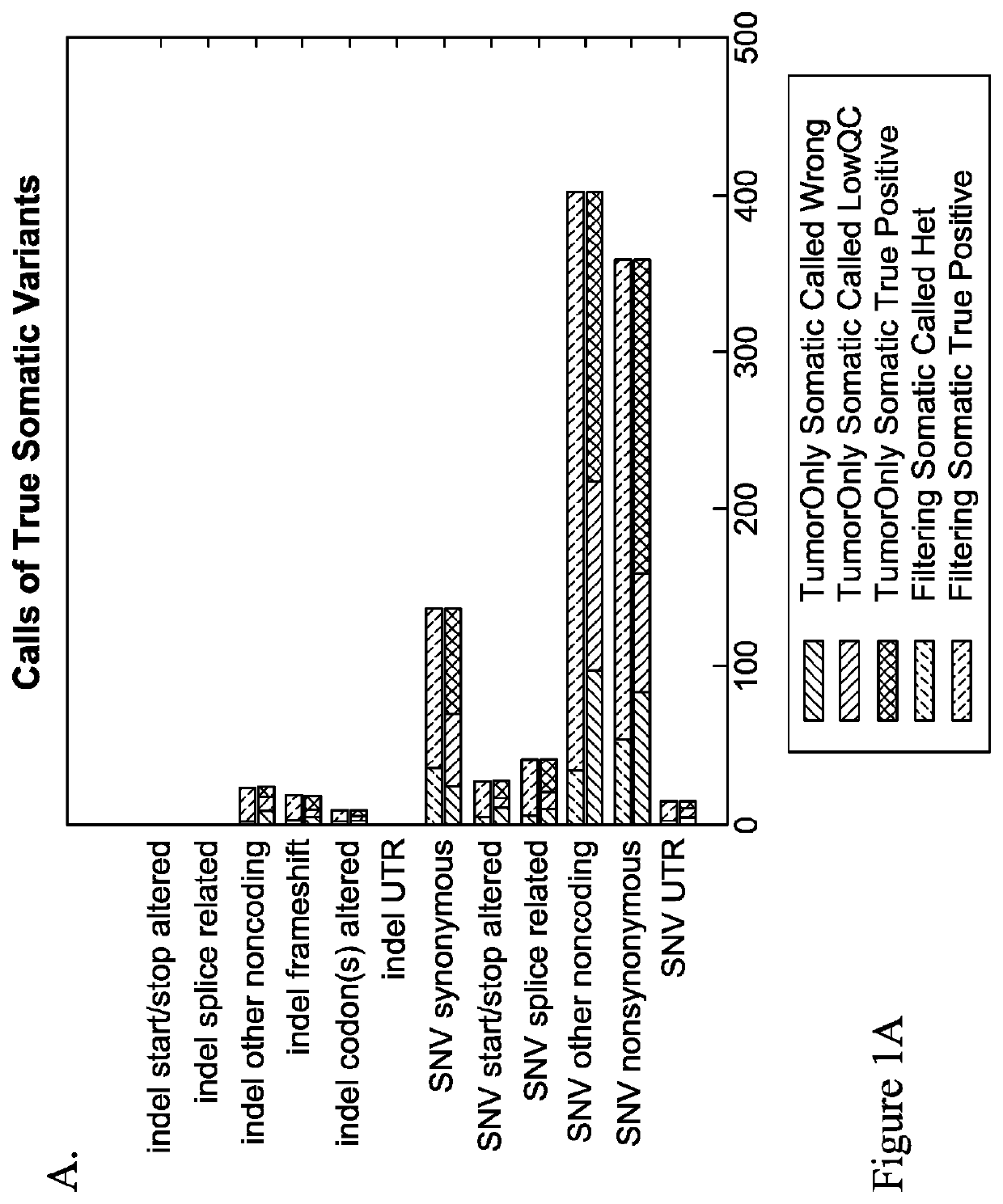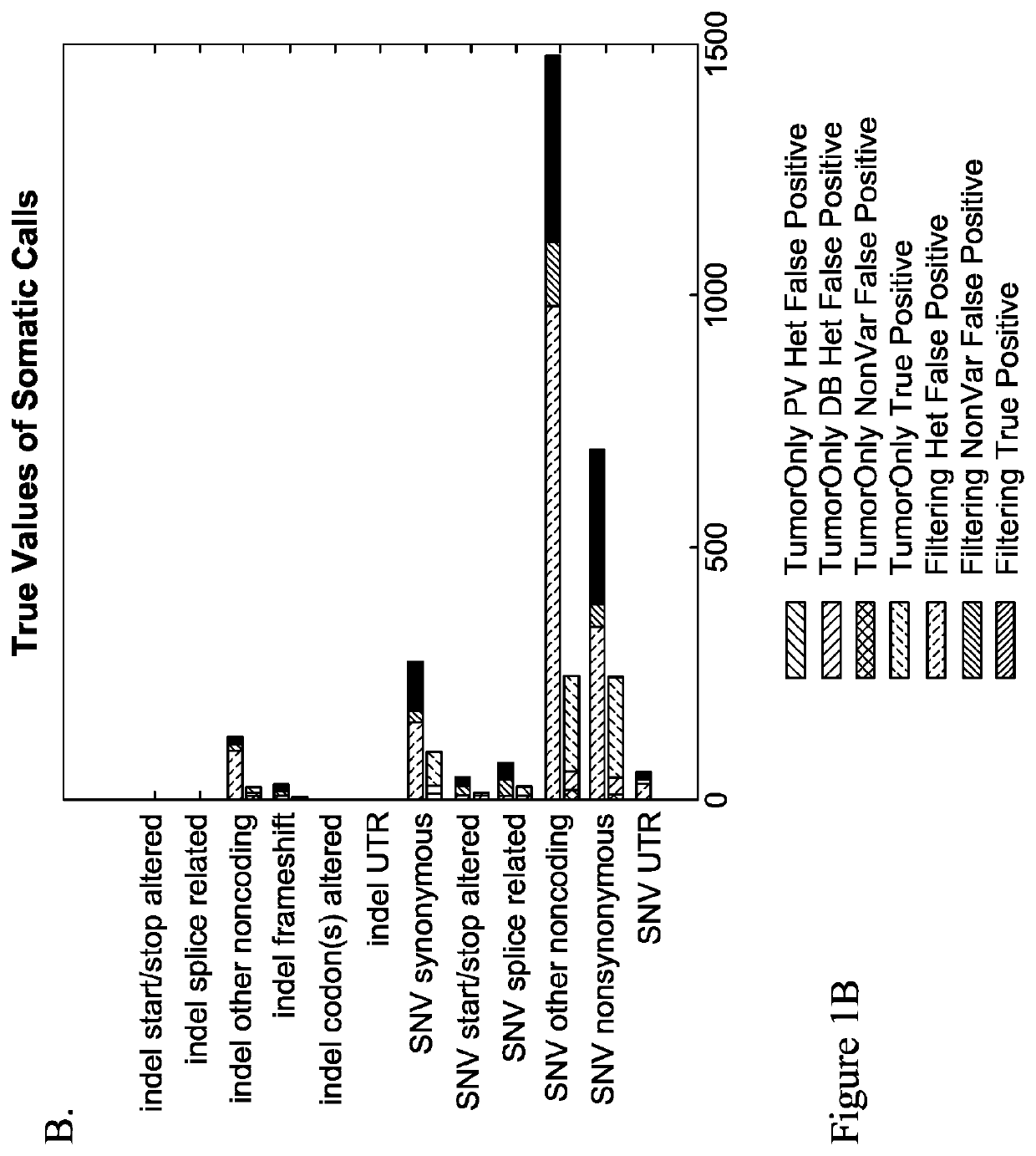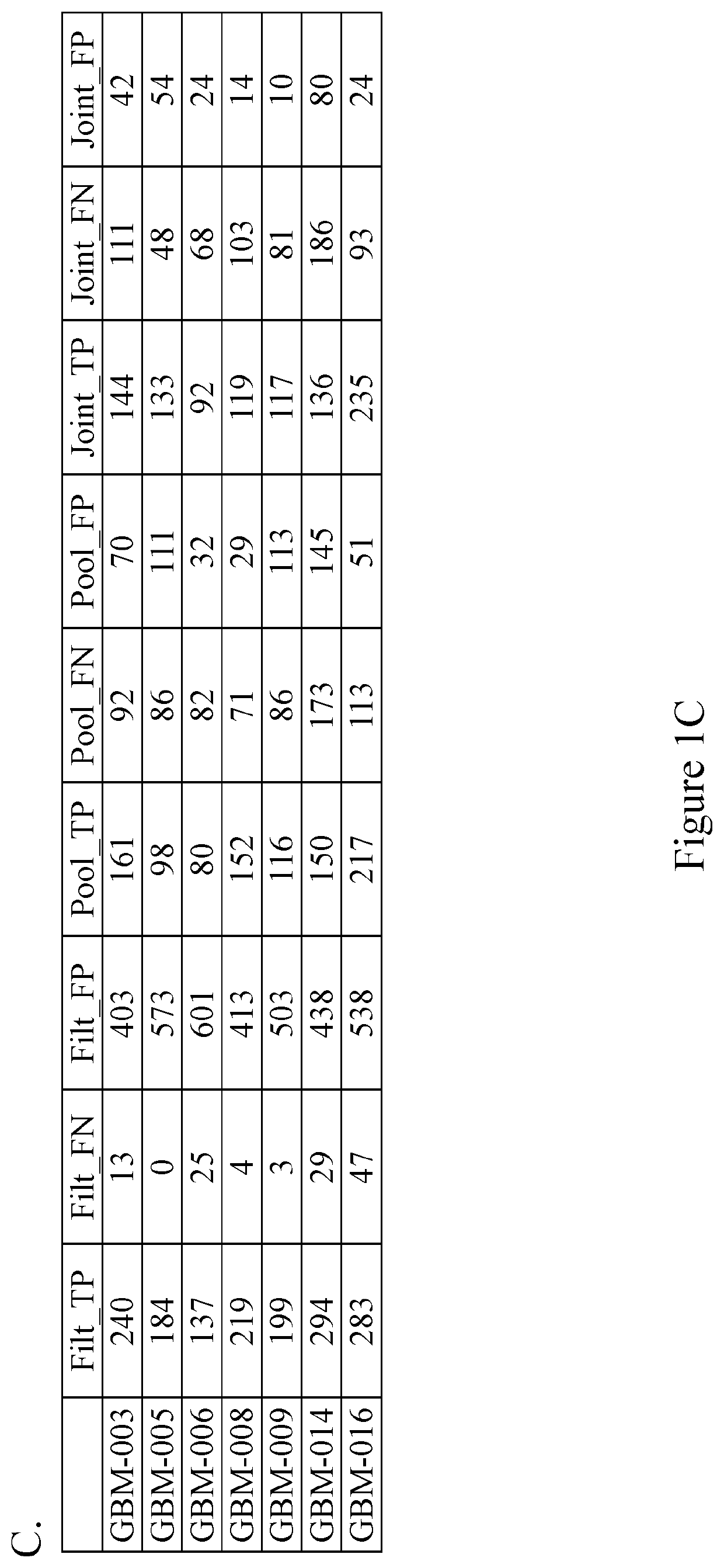Methods of detecting somatic and germline variants in impure tumors
a tumor and germline variant technology, applied in the field of detecting somatic and germline variants in tumor samples, can solve the problems of difficult to determine which variants are somatic, difficult to know if adjacent normal tissue is truly free of infiltrating tumor cells, and difficult to determine if the tumor cells are somati
- Summary
- Abstract
- Description
- Claims
- Application Information
AI Technical Summary
Benefits of technology
Problems solved by technology
Method used
Image
Examples
example 1
[0100]a. Nucleic Acid Isolation
[0101]Ethics approval and consent to participate: All patients consented to an institutional review board-approved protocol that allows comprehensive genetic analysis of tumor and germline samples. Information regarding patients and samples are provided (FIG. 2).
[0102]Formalin-fixed tissue, clinical and pathology data, and pre-operative MRI scans were acquired for twenty breast cancer patients and twenty prostate cancer patients from HonorHealth Scottsdale, in accordance with local institutional review boards and in compliance with the Health Insurance Portability and Accountability Act (HIPAA). IRB approval included a waiver of informed consent for the prostate cancer patients. Patients in the breast cancer cohort provided signed consent to participate in the study. A retrospective analysis was performed using archival samples from treatment-naïve, invasive breast carcinomas or treatment-naïve prostate adenocarcinomas.
[0103]Breast tumors were collecte...
example 2
dence of Private Germline Variation on Ancestry
[0162]Current approaches for filtering out germline variants from potential somatic variants typically include a comparison to databases containing large numbers of germline variants. Private germline variants are difficult to distinguish from somatic variants when a constitutional sample from the same individual is not available. Private variants are not present in polymorphism databases, so they may not be easily filtered out.
[0163]A recent study has shown increased false positive germline variants in non-Caucasians18. The 1000 genomes project found more novel variants in populations of African ancestry compared to those of European ancestry20. We would also expect there to be differences in the number of private germline variants between populations of different ancestry. We first sought to examine the dependence of private germline variation on ancestry independent of prior databases by utilizing 1000 Genomes Phase 3 data on 26 diff...
example 3
for Considering Allele Fraction Shifts as a Function of Copy Number and Clonal Heterogeneity
[0166]Since somatic variants will only occur in tumor cells, but germline variants will occur in all cells, we can leverage differences in allele frequencies to differentiate between somatic and normal variants in impure tumor samples. In solid tumors, stromal cells and infiltrating lymphocytes are typically interspersed among the tumor cells46,47. The normal cell contamination in tumors can be leveraged to differentiate somatic from germline variants. For example, in a normal diploid region, a heterozygous germline variant should have an allele frequency around 50% while a heterozygous somatic mutation in an impure tumor should have a lower allele frequency. Still, tumors often have many copy number alterations that will affect the expected allele frequencies of both germline and somatic variants. One approach, implemented by Smith et al., is to fit the distribution of allele frequencies of ...
PUM
| Property | Measurement | Unit |
|---|---|---|
| volume | aaaaa | aaaaa |
| temperature | aaaaa | aaaaa |
| temperature | aaaaa | aaaaa |
Abstract
Description
Claims
Application Information
 Login to View More
Login to View More - R&D
- Intellectual Property
- Life Sciences
- Materials
- Tech Scout
- Unparalleled Data Quality
- Higher Quality Content
- 60% Fewer Hallucinations
Browse by: Latest US Patents, China's latest patents, Technical Efficacy Thesaurus, Application Domain, Technology Topic, Popular Technical Reports.
© 2025 PatSnap. All rights reserved.Legal|Privacy policy|Modern Slavery Act Transparency Statement|Sitemap|About US| Contact US: help@patsnap.com



